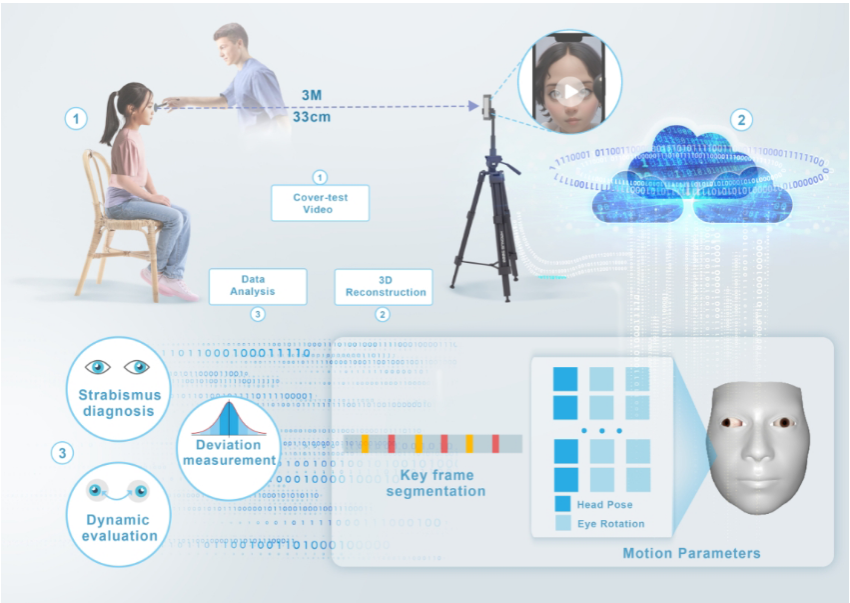A research team led by Prof. Haotian Lin from the Zhongshan Ophthalmic Center of Sun Yat-sen University (SYSU), in collaboration with Prof. Feng Xu from Tsinghua University, has developed a Digital Ruler for Strabismus (DRS), building upon their earlier breakthrough—the world’s first digital mask technology. The new tool enables ophthalmologist-level, automatic and precise measurement of strabismus using only a 30-second video recorded on a smartphone.
On October 23, 2025, the study was published online in NEJM AI, a sub-journal of The New England Journal of Medicine, under the title “A smartphone-based digital ruler to automatically measure strabismus in ophthalmologist-level: prospective, multicenter cohort study.” The technological innovation has also been granted three invention patents.

Workflow of the Digital Ruler of Strabismus System.
“The study provides a truly practical solution for out-of-hospital screening, early diagnosis, and home follow-up of strabismus,” said Dr. Xinping Yu, corresponding author of the paper and chief ophthalmologist at the Zhongshan Ophthalmic Center. Strabismus is one of the most common ocular disorders during children’s visual development, and early screening is crucial for preventing irreversible amblyopia and loss of stereoscopic vision. However, children often lack awareness of visual discomfort, and non-professionals struggle to detect early signs, making timely diagnosis challenging.
Traditional diagnostic methods rely heavily on trained specialists and are time-consuming, limiting their use in large-scale screening and follow-up. Although automatic measurement techniques for strabismus have been proposed in the past, their clinical application has been restricted due to insufficient accuracy and high equipment costs. Therefore, developing a precise, smartphone-based measurement technology carries significant scientific and clinical value.
In addition, because the DRS is compatible with consumer-grade smartphones, it can be widely applied in resource-limited regions both in China and abroad, improving access to eye-care services. This study is expected to inject new momentum into the digital transformation of strabismus screening, follow-up, and monitoring.
Link to the paper: https://ai.nejm.org/doi/full/10.1056/AIoa2401205
